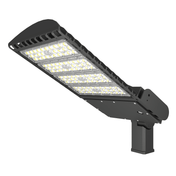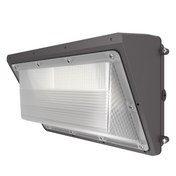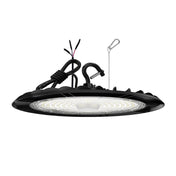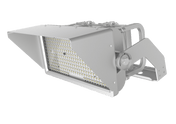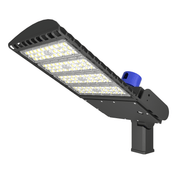Introduction: The Industrial Lighting Dilemma
Industrial spaces—from manufacturing plants and warehouses to distribution centers and assembly lines—demand lighting solutions that are far more robust than residential or commercial fixtures. Traditional industrial lighting options like metal halide, high-pressure sodium (HPS), or fluorescent lights have long been the go-to, but they come with significant drawbacks: high energy bills, frequent replacements, poor light quality, and limited durability. In recent years, LED high bay lights have emerged as a game-changer, addressing these pain points while delivering unmatched performance. But what exactly makes them the superior choice for industrial environments? Let’s dive into the 7 key reasons why LED high bay lights are revolutionizing industrial lighting.
1. Unbeatable Energy Efficiency: Slash Utility Costs
Energy consumption is one of the biggest operational expenses for industrial facilities, and lighting often accounts for a large portion of that.
LED high bay lights outshine traditional options by converting up to 90% of electrical energy into light, compared to just 20-40% for metal halide or HPS lights. This means a 100W LED high bay light can produce the same or brighter illumination as a 400W metal halide fixture—cutting energy usage by up to 75%. For a warehouse with 50 fixtures, this translates to thousands of dollars in annual savings on electricity bills. Over the lifespan of the lamps (which we’ll cover next), the energy savings alone can offset the initial investment multiple times over.
2. Exceptional Longevity: Reduce Maintenance Headaches
Industrial facilities are often large, with high ceilings (15ft or more), making lighting maintenance a time-consuming and costly task. Traditional metal halide lights typically last 10,000-20,000 hours, requiring frequent bulb replacements. LED high bay lights, however, boast an average lifespan of 50,000-100,000 hours—equivalent to 5-10 years of continuous use (based on 12 hours of daily operation). This drastically reduces the need for ladder work, replacement parts, and labor costs. Imagine a manufacturing plant that once had to replace 100 metal halide bulbs every 2 years—switching to LEDs could mean no replacements for a decade, freeing up maintenance teams to focus on more critical tasks.
3. Superior Light Quality: Enhance Safety and Productivity
Industrial environments require consistent, bright, and uniform lighting to ensure worker safety and productivity. LED high bay lights excel in this area with high Color Rendering Index (CRI) ratings—usually 80+ CRI, compared to 60-70 CRI for metal halide lights. A higher CRI means colors appear more accurate and true-to-life, which is crucial for tasks like quality control, assembly work, or inventory management where color distinction matters. Additionally, LED high bays produce directional light, allowing for a precise optical design that minimizes glare and ensures even light distribution across large spaces. This reduces eye strain for workers, lowers accident risks, and can even boost productivity by up to 15%, according to industry studies.
4. Instant On/Off and Dimmability: Flexible Control
Traditional industrial lights like metal halide require a warm-up time (5-10 minutes) to reach full brightness, and they can’t be turned on/off frequently without shortening their lifespan. LED high bay lights, by contrast, turn on instantly at full brightness, making them ideal for spaces that are not in constant use (e.g., shift-based warehouses or intermittent production areas). Many LED models also support dimming capabilities and smart controls (such as motion sensors or daylight harvesting). For example, a warehouse can dim lights in low-traffic zones or turn them off completely when no activity is detected, further reducing energy waste. This flexibility gives facility managers greater control over their lighting systems and adapts to changing operational needs.
5. Durability: Built for Harsh Industrial Conditions
Industrial environments are tough on lighting: dust, moisture, vibrations, and temperature fluctuations are common. LED high bay lights are designed to withstand these harsh conditions. Most models feature a rugged die-cast aluminum housing that is corrosion-resistant and impact-proof. They also have high Ingress Protection (IP) ratings—often IP65 or higher—meaning they are dust-tight and protected against low-pressure water jets (e.g., from cleaning hoses). Unlike fluorescent tubes, LEDs have no fragile glass components or filaments, so they’re less likely to break from vibrations or accidental bumps. This durability ensures reliable performance even in the most demanding settings, from cold warehouses to hot manufacturing floors.
6. Environmental Friendliness: Meet Sustainability Goals
Sustainability is a growing priority for businesses worldwide, and lighting plays a key role in reducing carbon footprints. LED high bay lights are eco-friendly for several reasons: they contain no toxic substances like mercury (found in fluorescent lights) or lead, making them safe to dispose of. Their energy efficiency also reduces greenhouse gas emissions associated with electricity production. For example, replacing 100 metal halide fixtures with LEDs can reduce CO2 emissions by over 100 tons per year. Additionally, their long lifespan means fewer fixtures end up in landfills, further minimizing environmental impact. Choosing LEDs isn’t just good for your bottom line—it’s a responsible choice for the planet.
7. Cost-Effectiveness: Long-Term ROI That Pays Off
While LED high bay lights may have a higher upfront cost than traditional fixtures, their long-term return on investment (ROI) is undeniable. Let’s break it down: a 200W LED high bay costs around $150, while a 400W metal halide costs $50. But the LED uses 50% less energy, saving $100+ per year in electricity (based on $0.15/kWh). Add in the savings from reduced maintenance (no bulb replacements for 5+ years) and the LED pays for itself in 1-2 years. After that, it’s pure savings. For large industrial facilities, the cumulative cost savings over 10 years can be in the hundreds of thousands of dollars—making LEDs the most cost-effective lighting solution in the long run.
Conclusion: LED High Bays—The Future of Industrial Lighting
Industrial lighting isn’t just about brightness—it’s about efficiency, durability, safety, and cost savings. LED high bay lights check all these boxes and more. From slashing energy bills and reducing maintenance headaches to enhancing worker safety and meeting sustainability goals, they offer compelling benefits that traditional lighting simply can’t match. As technology advances and LED costs continue to drop, there’s no better time to make the switch. Whether you’re upgrading a warehouse, manufacturing plant, or distribution center, LED high bay lights are the smart, future-proof choice for industrial lighting that delivers value for years to come.




